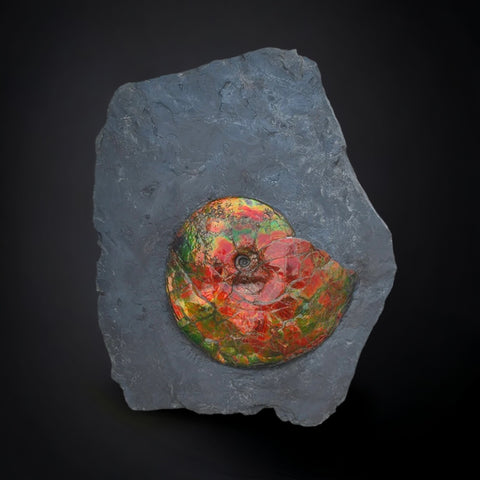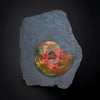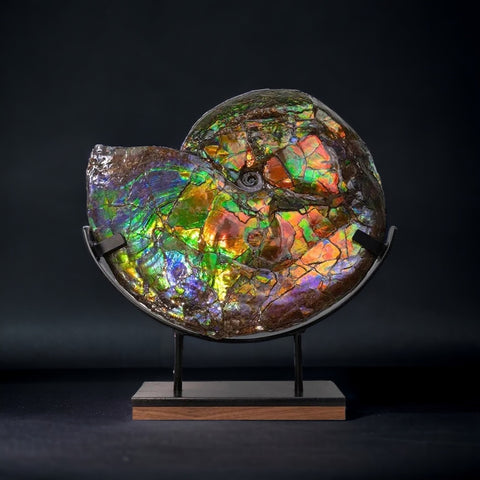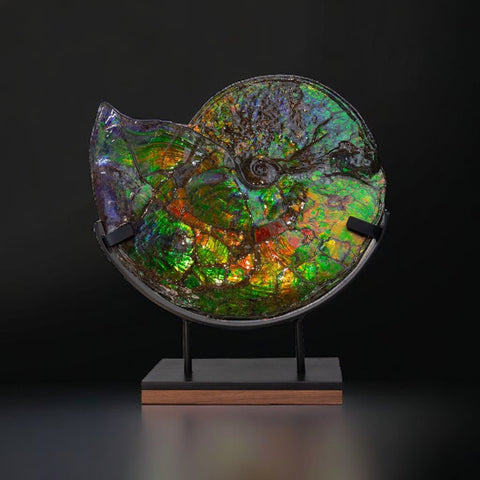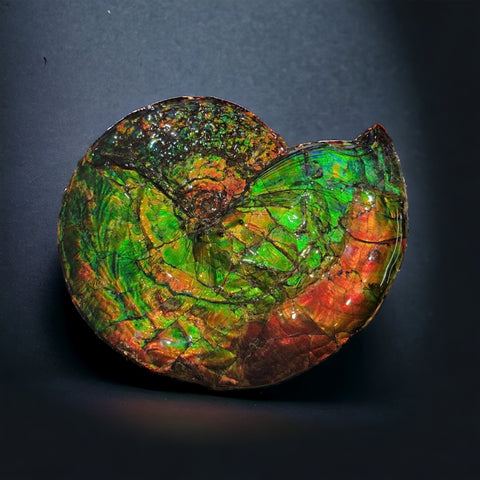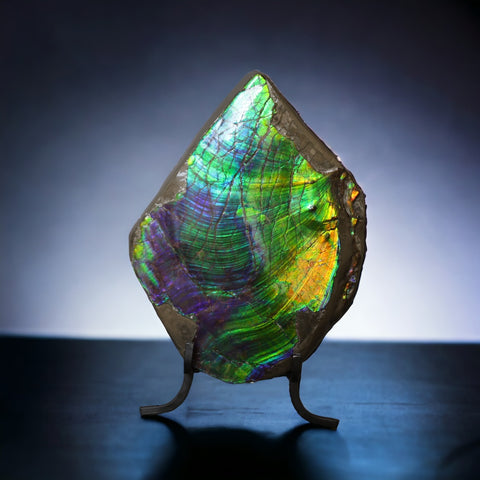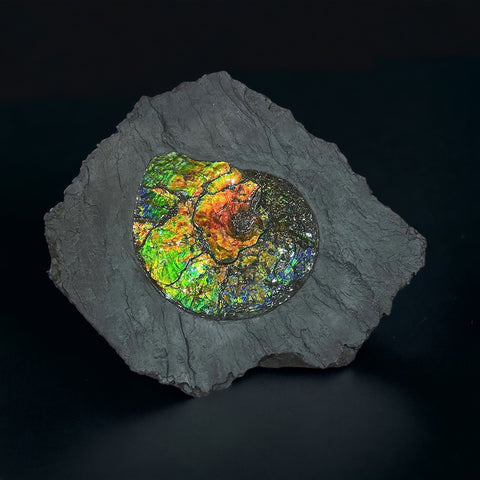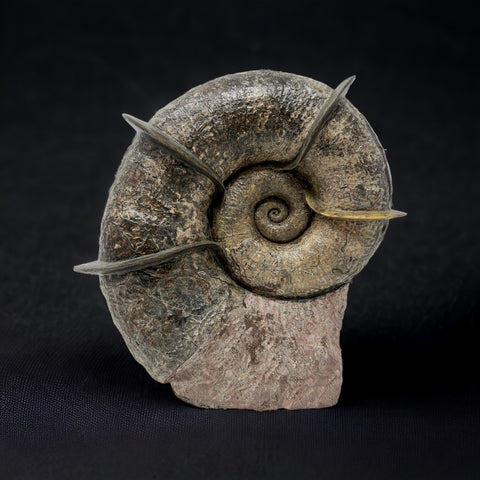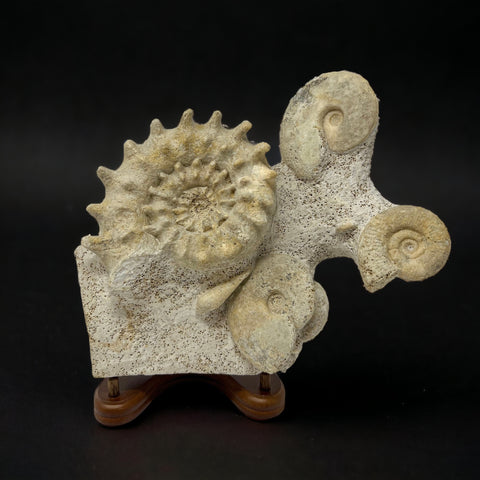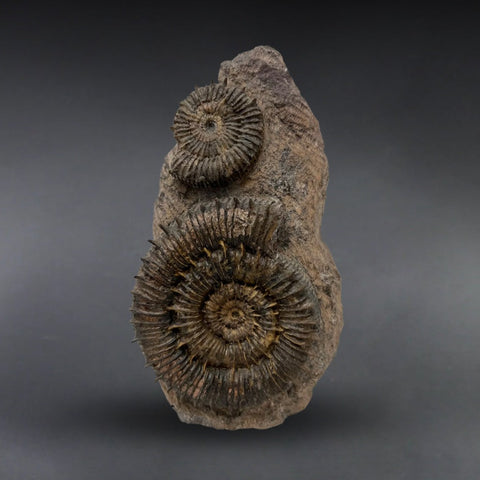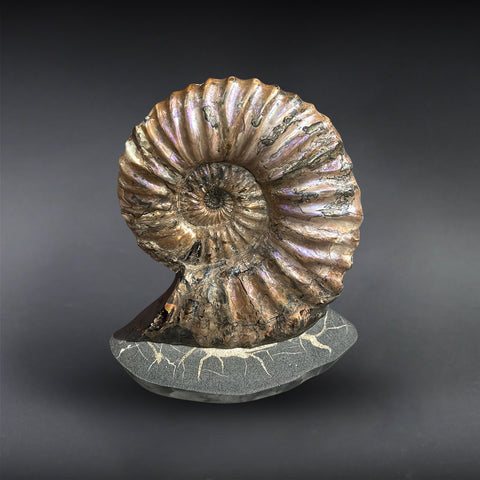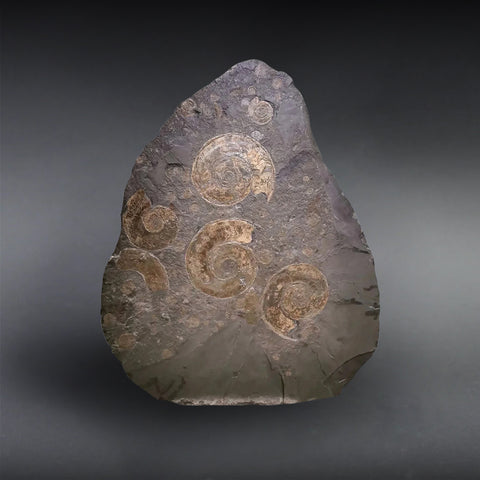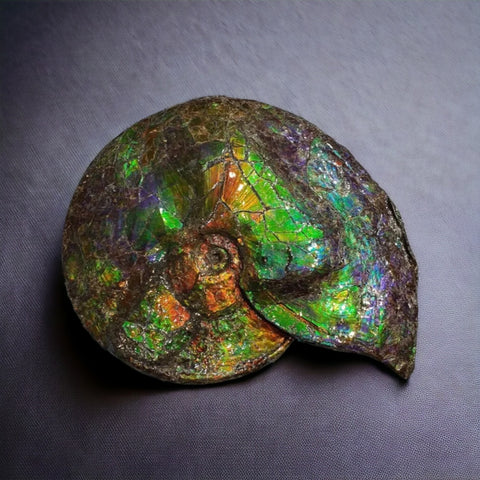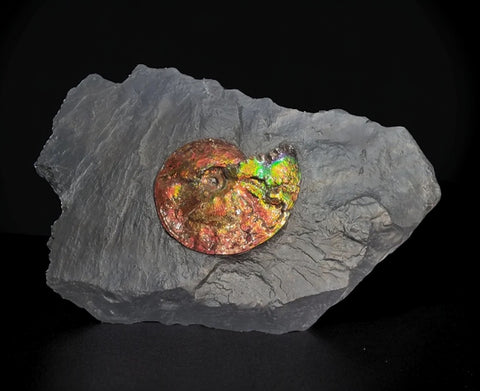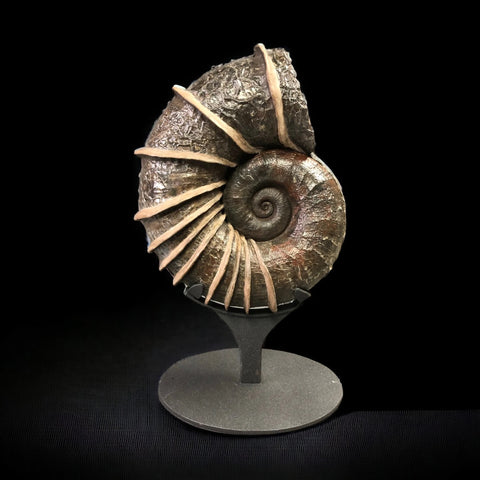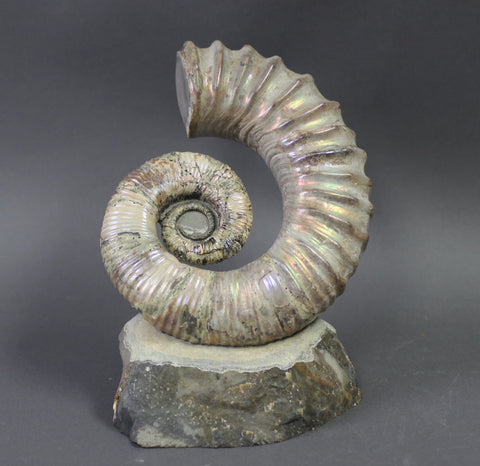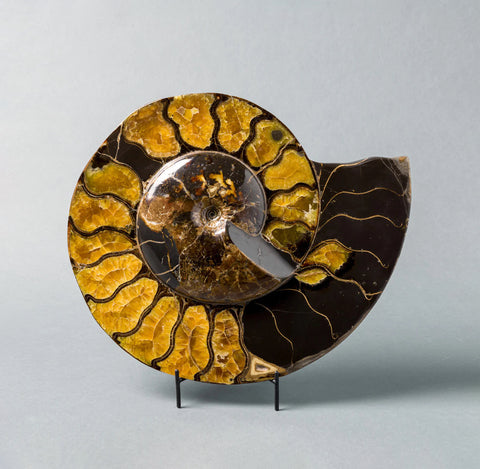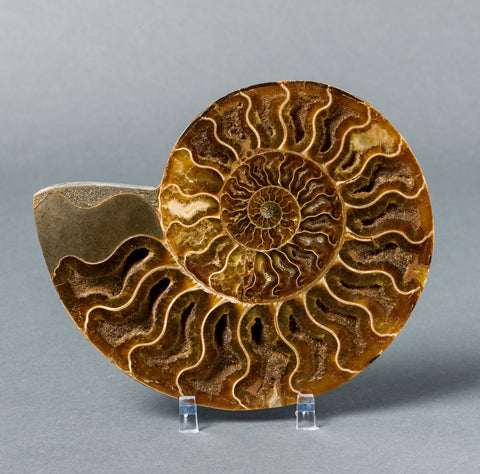Iridescent Ammonite, 16"
This piece has been sold, but we may have a similar item available. Contact us online to make an inquiry.
This incredible specimen is a stunning example of an iridescent Canadian ammonite in shale matrix. Its entire shell is preserved with gorgeous ammolite. Red and Burgundy predominate, with many other bright colours present, including orange, green, gold and a hint of rare blue/purple (be sure to check out the youtube video!). Moreover, this unique piece is more three dimensional than most specimens from this locality (no flattening).
Ammolite is a rare, opal-like gemstone found in Alberta's Upper Cretaceous Bearpaw formation, just east of the Rocky Mountains. This piece displays extremely bright hues and it has excellent overall shape; fine details of the shell structure are present, including the ribbing of the living chamber. Complete specimens, especially with such intense coloration and lustre, are exceedingly rare.
Ammonite measures 41cm (16"), size of the matrix: 80 cm x 64 cm (31.5" x 25")
Weight. 44.5 kg. / 98 lbs.
Deposit: Bearpaw Formation
Location: Southern Alberta, Canada
Age: Late Cretaceous (71 million years old)
Registration Number 89(993)
Contact Us for more information.
Ammonites belong to the Mollusca Phylum in a Class known as Cephalopods – “head-footed” creatures such as octopus and squid. They swam in ancient oceans from 400 million years ago, to their extinction, along with the dinosaurs, 66 million years ago.
Ammonites were free floating invertebrates that were attacked by plesiosaurs and mosasaurs, two groups of gigantic marine reptiles. One way that ammonites could avoid an attack was to quickly change their buoyancy levels, zig zagging and sinking rapidly.
These incredible prehistoric animals ranged in size from tiny species only a few centimetres in diameter to the monstrous Cretaceous ammonite, Parapuzosia seppenradensis, which grew to about 3 meters and would probably weigh close to 1500 kilograms!
You may also like
Iridescent Ammonite with Stunning Blue - 19"
This piece has been sold, but we may have a similar item available. Contact us online to make an inquiry.
Bladed Ammonite, Lytoceras fimbriatum, 8.5"
This piece has been sold, but we may have a similar item available. Contact us online to make an inquiry.
Spiny Ammonites, Porpoceras - 6"
This piece has been sold, but we may have a similar item available. Contact us online to make an inquiry.
Iridescent Paradeshayesites Ammonite, 10.75"
This piece has been sold, but we may have a similar item available. Contact us online to make an inquiry.
Iridescent Ammonite, Bearpaw Formation, Canada
This piece has been sold, but we may have a similar item available. Contact us online to make an inquiry.
Iridescent Ammonite (Ammolite) in Matrix, 8.0"
This piece has been sold, but we may have a similar item available. Contact us online to make an inquiry.
Large Bladed Ammonite, Lytoceras cornicupae
This piece has been sold, but we may have a similar item available. Contact us online to make an inquiry.
Heteromorph Ammonite, Australiceras - 9.5"
This piece has been sold, but we may have a similar item available. Contact us online to make an inquiry.
Beautiful Craspedodiscus Ammonite - 15.5"
This piece has been sold, but we may have a similar item available. Contact us online to make an inquiry.
Gorgeous Sliced Ammonite from Madagascar
This piece has been sold, but we may have a similar item available. Contact us online to make an inquiry.

